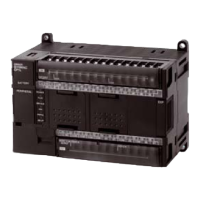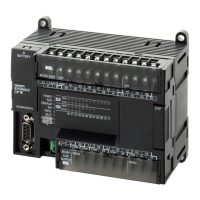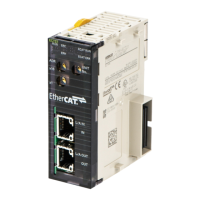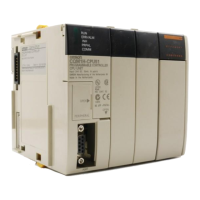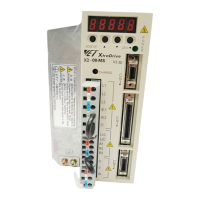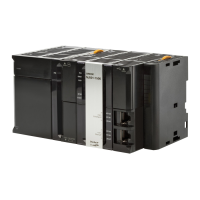436
Temperature Sensor Units Section 7-5
Startup Operation
After power is turned ON, approximately 1 s is required for the first conversion
data to be stored in the input word. During that period, the data will be 7FFE.
Therefore, create a program as shown below, so that when operation begins
simultaneously with startup it will wait for valid conversion data.
Handling Unit Errors
• CP-series Expansion Unit/Expansion I/O Unit errors are output to bits 0 to
6 of word A436. The bits are allocated from A436.00 in order starting from
the Unit nearest the CPU Unit. CP1W/CPM1A-TS002 and CP1W/
CPM1A-TS102 Temperature Sensor Units are allocated two bits each.
Use these flags in the program when it is necessary to detect Expansion
Unit/Expansion I/O Unit errors.
• When an error occurs, the Temperature Sensor Unit data becomes 7FFF
hex (the same as for an open-circuit detection). With an open-circuit
detection, it is not reflected in word A436.
Programming Example
1,2,3... 1. The following programming example shows how to convert the input data
from 2 temperature sensor inputs to BCD and store the result in D0 and
D1.
(P_EQ)
1000.00
2
#7FFE
P_On
CMP(020)
Always ON
Temperature input data
output word
Initialization
Completed Flag
CP1H
CP1W-TS001/101
CPM1A-TS001/101
Temperature Sensor Unit
Inputs
Outputs
CIO 0
CIO 1
CIO 100
CIO 101
CIO 2
CIO 3
None
Temperature unit setting: 0 (°C)
Two-decimal-place Mode: 0 (normal)
Input range setting: 1 (K: 0.0 to 500.0°C)
Input 0: CIO 2
Input 1: CIO 3
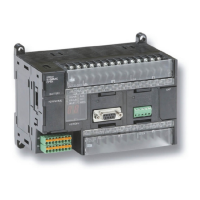
